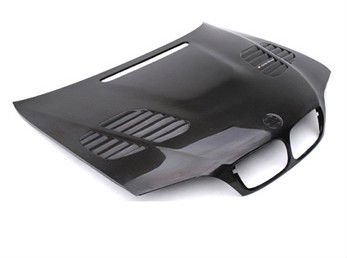Hello! And welcome to another addition of Lexi.Laron. Today you will be learning about carbon fiber, that is why it is such a good material for usage in motorsports and how it is made.
So, let's begin with a little bit of chemistry, shall we?
There many different types of carbon, including graphite, diamond, and amorphous carbon. Graphite is a soft form of carbon. It's structure is composed of hexagonal planes that are aligned parallel to one another. When pressure is applied to it, the hexagonal planes rub onto the adjacent surface which supplies the pressure-- this is how your pencil works.
Diamond, amorphous carbon, buckey balls, and more all have their own structure, but when referring to the carbon fiber on your hood or in your wheels, we're talking about special molecules, or groups of atoms, which are mainly composed of carbon.
The particular structure of carbon is what makes it so good for usage in motorsports. It is strong when layered in sheets, but it is also extremely light.
The molecule in question here is formed of small repetitive units known as monomers called acrylonitrile.
Acrylonitrile has three carbon atoms, three hydrogen atoms, and one nitrogen atoms. The nitrogen you normally hear about is the type that is present in our atmosphere as a gaseous molecule, or N2.
Be patient, I promise it gets simpler from here on out.
Think of a bicycle chain. As small links are put together, you get one whole chain. The same concept applies to chemistry. Monomers form polymers and polymers can form plastics.
These little chain links known as "acrylonitrile" can combine and form a larger unit or whole chain known as polyacrylonitrile (many acrylonitriles). All plastic is made in a similar manner with little carbon-containing chain links which combine to form larger chains.
In the case of carbon fiber, the polyacrylonitrile, or big thing composed of smaller units (as described above), has to be heated to increase its strength. This is the stage at which you will start to see the black strands that form the carbon fiber mesh pattern that you all know so well.
These strands are then wound onto spools which are shipped to plants which weave the carbon fibers into fabric.
Manufacturers weave the carbon fiber strands into fabric using heavy-duty machinery containing large spools which align the strands next to each other while spinning. The aligned strands are then fed through machines which further align their positions in preparation for weaving. The fibers are then wound, layered with several types of epoxies and fed into molds which press them into the shape of hoods, roofs, dashboards, doors, and more.
The molded products are then heat-treated for hardness and shipped to their final destination.
Check out the vid if you haven't already! Thanks :)






No comments:
Post a Comment
Comment